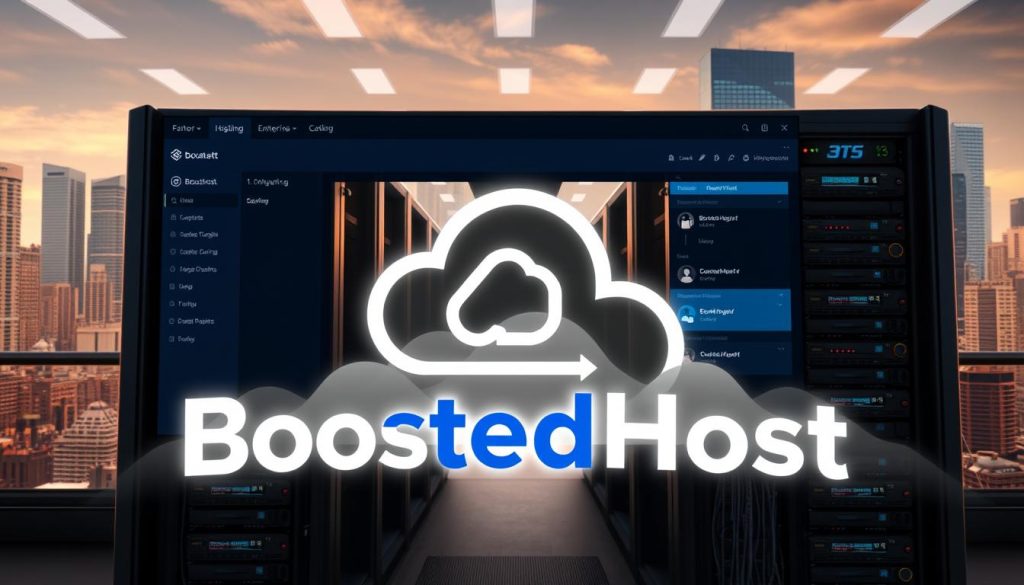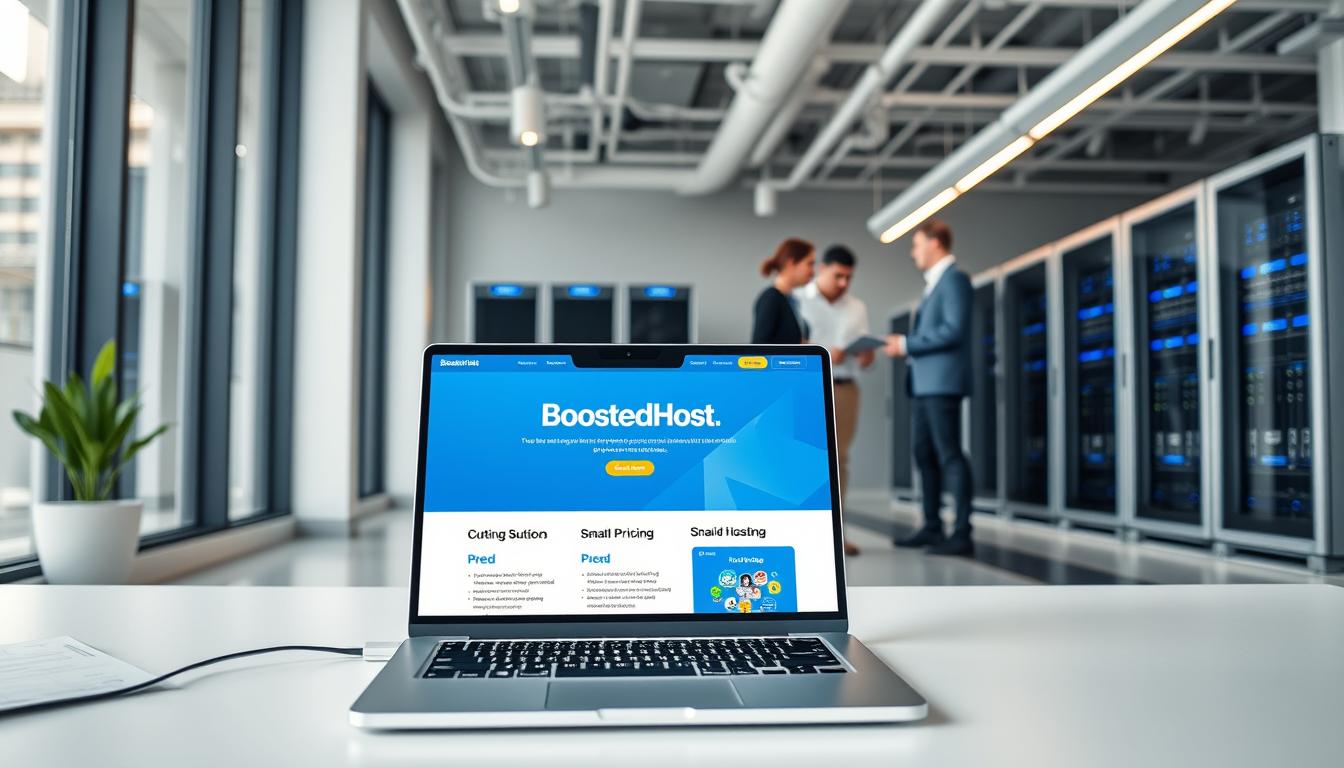We get it — choosing hosting feels heavy. We’ve had late-night site outages, rushed support tickets, and surprise renewal bills. That frustration pushed us to compare the real-world results, not marketing lines.
In this quick overview we set a straight-talking tone. We focus on what moves the needle — speed, uptime, support, and total cost. That’s what keeps your website fast and your customers coming back.
We’ll show where Swiss engineering and LiteSpeed servers deliver measurable performance and where budget-friendly entry plans make sense. Expect clear trade-offs on plans, features, backups, CDN, and managed WordPress tuning.
Key Takeaways
- We compare both companies to help you make a confident choice for your website.
- Speed and uptime protect revenue — real performance wins matter.
- Included features like SSL, backups, and CDN reduce surprise costs.
- Support responsiveness and first-contact resolution affect recovery times.
- We break down intro deals versus renewals so your budget stays predictable.
Who this 2025 comparison is for and how we evaluated
We built this comparison around practical tests and cost reality, not marketing claims. Our goal is simple: help you pick hosting that keeps your website fast, stable, and predictable.
Commercial intent: This guide targets business owners, marketers, agencies, and creators who need a fast, reliable host without hidden gotchas. We focus on clear benefits — uptime, performance, and total cost — so teams can make confident buys.

Evaluation pillars
We measured what matters. Tests used live traffic, stress scenarios, and real pages — not empty demos. We also audited control panels, entry pricing, renewal behavior, and support response times.
“We judge hosts by what your site experiences week after week — not promises on a product page.”
- Performance under load — page speed and TTFB.
- Uptime consistency and SLA reality.
- Pricing transparency — intro vs renewal and total cost.
- Day-one features and AI tools for faster launches.
- Support channels and first-contact resolution speed.
| Criterion | What we tested | Why it matters |
|---|---|---|
| Performance | Global load tests, TTFB | Faster pages increase conversions |
| Uptime | Observed SLA vs real uptime | Downtime costs revenue and trust |
| Pricing & Plans | Intro deals, renewals, inclusions | Predictable costs reduce surprises |
| Features & Tools | SSL, backups, CDN, AI builder | Ship faster with fewer ops headaches |
BoostedHost vs DreamHost: quick snapshot of each provider
We cut through marketing and list the essentials so you can spot which host fits your site goals fast.
At a glance — premium performance
BoostedHost is engineered for speed. LiteSpeed servers, built-in caching, and a global CDN push sub-200ms TTFB across Switzerland, USA, Europe, and Asia.
Core features include free SSL, daily backups, malware protection, and Managed WordPress tuned for WooCommerce.
Orbit AI accelerates site launches — many teams go from idea to live in under five minutes. Support is 24/7 with minutes-to-resolution and a 99.99% uptime promise.

At a glance — budget and simplicity
DreamHost targets entry cost. Plans include SSD storage, a custom control panel, and a free domain for year one.
Managed WordPress is affordable for smaller sites and shared hosting projects. Independent tests show solid single-page speed, though heavier builds can vary.
Choose based on whether consistent performance and included features matter more than low up-front cost.
Raw speed and global performance
Raw speed decides whether visitors stay or leave — and we measure it with real content and concurrent users. Fast response is a core business metric for any hosting plan.
BoostedHost: sub-200ms global TTFB with LiteSpeed and CDN
LiteSpeed + QUIC + HTTP/3 and aggressive caching deliver regularly sub-200ms TTFB across regions. Server-level caching speeds PHP apps and WooCommerce. The integrated CDN pushes assets to edge nodes for consistent performance.
DreamHost: strong single-page load times, varies under heavier sites
Independent tests show quick times on simple pages. But when pages grow with images and dynamic queries, timings can vary under load. For complex builds, consistency matters more than occasional peaks.
What speed means for SEO and conversions in 2025
“Speed drives revenue — faster hosting cuts bounce and lifts conversions.”
- Lower TTFB improves Core Web Vitals and search visibility.
- Cloud edge distribution reduces round trips and improves UX.
- Dynamic caching and optimized PHP keep sites responsive during spikes.
| Metric | Edge behavior | Why it matters |
|---|---|---|
| TTFB | Sub-200ms (LiteSpeed stack) | Faster first paint and lower bounce |
| Caching | Server & CDN level | Reduces backend hits under load |
| Consistency | Low variance across regions | Better checkout and funnel completion |
Uptime guarantees and real-world reliability
Uptime is the baseline of trust for any live website. Downtime erodes conversions and client confidence. We look at guarantees and how they play out over months.
BoostedHost reliability
99.99% average uptime across Switzerland, USA, Europe, and Asia. Multi-region redundancy and proactive monitoring keep websites reachable during spikes.
24/7 on-call engineers and fast incident resolution mean fixes are measured in minutes, not hours.
DreamHost SLA and observed performance
They advertise a 100% SLA with credits for outages. Independent monitoring over a year has shown variability — around 98.4% in some tests, fluctuating by month.
“Real-world reliability is weeks and months of steady performance — not just a promise on a product page.”
- Uptime protects revenue — every minute matters for your website.
- Monitor at frequent intervals; long checks can hide micro-outages.
- Transparent incident handling and fast support limit damage when issues occur.
| Factor | BoostedHost | DreamHost |
|---|---|---|
| Average uptime | 99.99% (multi-region) | 100% SLA (independent ~98.4% observed) |
| Incident response | 24/7 engineers, minutes-to-fix | Chat/email; phone callbacks on higher tiers |
| Monitoring | Proactive, regional failover | Depends on plan and monitoring intervals |
For companies and agencies, the winner is simple: the host that stays up and responds fast when it counts.
Pricing clarity and total cost of ownership
Pricing is where promises meet real budgets — we map the full cost picture so you won’t be surprised at renewal time.
We focus on predictable billing and real TCO. A low introductory rate can tempt you, but the full lifecycle matters more than one month of savings.
BoostedHost: transparent pricing with no hidden fees
Transparent plans include SSL, daily backups, malware protection, and a global CDN by default.
This means the features most websites need are not paywalled. Monthly and yearly options scale for individuals, SMBs, and agencies.
DreamHost: low introductory pricing, free domain year one, renewal caveats
Entry plans lower the barrier with a free domain in the first year. That reduces up-front cost.
Be ready for higher renewal rates and add-ons such as phone callbacks and advanced support on higher tiers.
What’s included vs upsold: SSL, backups, malware protection, CDN
Compare side-by-side. What you need on day one should not force surprise upgrades.
- Budget the full lifecycle — intro discounts can hide renewal spikes.
- Transparent pricing reduces procurement headaches for agencies and teams.
- Total cost includes performance — faster hosting cuts paid media waste and raises conversion ROI.
- Read fair-use clauses on “unlimited” options — overages still apply in practice.
| Factor | What’s typically included | Watch for |
|---|---|---|
| Security | Free SSL, malware protection | Paid premium scans or removal |
| Backups | Daily backups included | Restore limits or fees |
| Speed | Global CDN by default | Edge nodes and bandwidth caps |
Included features that matter on day one
What you get right out of the box shapes your launch day and the first months that follow.
For speed and security, one provider provisions free ssl automatically. That removes setup friction and gives immediate HTTPS protection for every website and plan.
Daily backups and one-click restores protect content and transactions without extra services. Built-in malware protection reduces cleanup work and keeps security risks low.
Global CDN accelerates assets worldwide with no separate setup or hidden fees. Ultra-fast LiteSpeed servers and 24/7 expert support handle PHP, Node.js, Python, and WooCommerce for flexible hosting services from day one.
On the budget side, SSD storage and a free domain in year one help new websites get live affordably. Managed WordPress covers routine updates for simpler builds, though advanced add-ons may require higher tiers.
- Launch secure from day one — SSL, backups, and malware protection included.
- Fewer plugins and vendors mean simpler operations and lower maintenance.
- Pick a plan that covers immediate needs and scales without forcing rapid add-ons.
| Included | Benefit | Watch for |
|---|---|---|
| Free SSL | Immediate HTTPS | None |
| Daily backups | Fast restores | Retention limits |
| SSD storage / CDN | Faster pages | Edge coverage |
Managed WordPress, WooCommerce, and site tooling
This section breaks down the tools that keep your WordPress site fast and resilient.
Managed WordPress: LiteSpeed cache and WooCommerce-ready tuning
Managed WordPress hosting pairs server-level caching with expert tuning for complex builds. LiteSpeed cache reduces TTFB and cuts backend load during traffic spikes.
WooCommerce-ready stacks keep carts and catalogs responsive during promotions. Our engineers tune DB queries, object caching, and page caches for real traffic patterns.
Entry managed updates and plan differences
Managed WordPress on budget plans focuses on automatic updates and low friction for small sites. That makes it ideal for new projects with tight budgets.
Staging, advanced plugins, and performance tools often live on higher tiers. Verify staging and restore limits before you commit so the plan matches your workflow.
Staging, backups, and what’s actually included
Daily backups, malware protection, and a CDN reduce plugin bloat and simplify maintenance. 24/7 expert support resolves most requests in minutes.
“Teams ship faster when one platform handles speed, security, and change control.”
- Server-level caching plus optional performance plugins for fine tuning.
- Automated backups and malware scans reduce ops work.
- Staging and restore policies vary—confirm limits on your chosen plans.
| Feature | What you get | Why it matters |
|---|---|---|
| Server caching | LiteSpeed / object cache | Lower TTFB, fewer backend hits |
| eCommerce readiness | WooCommerce tuning | Responsive carts during peak traffic |
| Backups & security | Daily backups, malware protection | Fast restores and lower risk |
For a fast, managed WordPress experience, review included tools and then choose a plan that matches your growth and staging needs. Learn more about our managed wordpress hosting.
Orbit AI Website Builder vs DreamHost’s site-building approach
Launching a professional website no longer requires juggling multiple tools and long setup times.
Orbit AI drafts a complete site in under five minutes — structure, sections, and starter content ready to customize. It speeds launches and revisions while leveraging our global CDN, free SSL, daily backups, and malware protection.
Orbit: launch a professional site in under 5 minutes
Orbit uses AI to create starter pages and sensible navigation. Designers keep creative control while the builder handles layout and content scaffolding.
That means freelancers and agencies validate ideas fast. Early-stage teams move from concept to live in one working session.
Who benefits from AI builders: freelancers, SMBs, and agencies
SMBs get a polished online presence without wrangling plugins or separate tools. Agencies ship MVPs quickly and iterate with clients on short cycles.
“AI-assisted workflows cut production time and tighten feedback loops.”
- Fast drafts: Orbit produces a full site structure and starter content.
- Reduced tool friction: Hosting features like SSL, CDN, backups, and security stay integrated.
- Choice: Teams pick a builder path that matches velocity and maintenance needs.
| Feature | Orbit AI | Custom control panel approach |
|---|---|---|
| Time to launch | Under 5 minutes | Depends on tools—hours to days |
| Included hosting features | SSL, CDN, backups, malware protection | Basic SSD hosting; add-ons often required |
| Best for | Freelancers, SMBs, agencies | Budget setups and simple sites |
Choose the builder that matches your speed needs and long-term maintenance preferences. Faster launches mean earlier feedback and faster revenue validation.
Developer stack and scalability
A modern stack and clear scaling paths decide whether a project grows smoothly or stalls.
Runtime support and deployment options
We provide PHP, Node.js, and Python support so dynamic apps run where they belong. Server-level LiteSpeed improves I/O and concurrency for WooCommerce and heavy PHP sites.
Multiple data centers and regional deployment options shorten latency for APIs and global users. That matters for real-time apps and CDN-backed assets.
Scaling paths and infrastructure choices
Clean upgrade routes move sites from shared plans to VPS hosting and cloud instances without long migrations. Predictable tiers and clear upgrade pricing keep budgets steady as traffic grows.
- Developers get modern tools and services for CI/CD and container-friendly workflows.
- Regional options reduce round trips and improve API response times.
- Server caching, HTTP/3, and optimized PHP handlers boost application performance.
Control panel and operational trade-offs
One provider offers SSD storage and a custom control panel that can speed simple tasks but adds a learning curve for teams used to mainstream control systems.
Familiar workflows matter. Engineers should match the control and options to their pipelines and tools to avoid friction during scaling or migrations.
| Capability | Developer benefit | Notes |
|---|---|---|
| Runtime support | PHP, Node.js, Python | Better concurrency and app compatibility |
| Scaling | Shared → vps → cloud | Predictable upgrade paths and pricing |
| Storage & I/O | SSD storage, CDN | Improved response; reduces origin load |
| Control panel | Ease of ops | Custom panels speed simple tasks but require training |
Recommendation: Choose the hosting option that matches your deployment model, CI/CD tools, and growth plan. Fast support and reliable services minimize downtime during upgrades and migrations.
Support responsiveness and channels
When a site breaks, response time decides whether you lose customers or keep them. Fast, clear channels matter more than long knowledge bases when your website is live and earning.
24/7 expert help that fixes most issues fast
We provide 24/7 support via chat and ticketing. Our engineers are on-call and resolve most requests in minutes. Clear escalation paths route complex cases to senior staff quickly.
Chat, email, and phone callbacks on higher tiers
DreamHost offers chat and email as core channels. Phone callbacks appear on higher-tier plans. Some users report longer ticket queues and mixed documentation depth.
Why first-contact resolution speed matters
Fast fixes cut downtime, refunds, and churn. First-contact resolution keeps small issues from growing into incidents. Agencies benefit from priority workflows that lower client escalations.
- When issues arise, speed wins — quick, skilled responses prevent escalation.
- We track internal SLAs to keep response times consistent.
- Channel choice matters — some teams need phone access for urgent fixes.
| Channel | Availability | Typical response |
|---|---|---|
| Chat | 24/7 | Minutes for common issues |
| Email / Ticket | 24/7 intake | Minutes to hours depending on complexity |
| Phone | Higher-tier plans / callbacks | Priority for urgent cases |
Data center locations and global audience reach
Placing infrastructure near your customers shrinks load times and lifts conversions. We design regional presence to deliver predictable performance for business sites and web apps.
Multiple data centers across Switzerland, the USA, Europe, and Asia cut round trips. That reduces time-to-first-byte for visitors in those regions.
BoostedHost: multi-region coverage for low-latency delivery
Our multi-region setup pairs local compute with a global CDN and edge caching so static assets live near users. This setup boosts page load and overall performance.
- Place workloads close to users to reduce latency across continents.
- Global CDN brings static assets to the edge for faster first paint.
- Redundant design supports an average 99.99% uptime with regional failover.
- Edge caching offloads origin for media-rich sites and stabilizes response times.
| Benefit | Why it matters |
|---|---|
| Regional placement | Lower latency for target markets and better international SEO |
| Cloud + CDN | Consistent performance and reduced origin load |
| Monitoring & alerting | Route around saturation and protect launches |
Pick regions aligned with traffic and compliance needs — cross-region strategies protect high-traffic events and seasonal peaks.
Use cases: which host fits which kind of website
Different websites have different priorities; pick the host that meets those needs without compromise. We lay out clear choices so you can match needs and options to real traffic and growth goals.
Choose BoostedHost for speed-first brands, agencies, and growing stores
When speed and reliability are mission-critical, choose this option. It delivers sub-200ms TTFB and 99.99% uptime for high-converting pages and complex stores.
Agencies benefit from bundled CDN, daily backups, malware protection, and fast support. Orbit AI accelerates launches, which helps teams iterate faster.
- Pick this option when your website drives revenue and cannot afford slowdowns.
- Ecommerce and subscription sites benefit from LiteSpeed caching and resilient uptime under load.
Choose DreamHost for entry-level budgets prioritizing SSD and basic managed WP
If upfront cost matters more than peak performance, this choice fits. Independent reviews highlight strong SSD value and low introductory pricing.
It works well for simple, low-traffic sites or early-stage projects that need basic managed WordPress with a free domain in year one.
“Plan ahead — migrating under pressure is costlier than starting on a scalable plan.”
- Evaluate what features you’d buy anyway — SSL, backups, malware protection, and CDN — and compare included value.
- Match your needs to the right plans to avoid paying for add-ons piecemeal later.
- Consider team skills: custom panels vs familiar workflows affect daily ops and support speed.
| Use case | Best option | Why |
|---|---|---|
| High-traffic ecommerce | Speed-first option | Advanced caching, CDN, and uptime |
| Small brochure or blog | Entry-level hosting | Low cost, SSD storage, basic managed WP |
| Agency & multi-site | Speed-first option | Bundled tools reduce ops and incidents |
Our recommendation: align your choice with audience size, performance goals, and maintenance capacity. That reduces surprises and keeps growth predictable.
Conclusion
Our closing takeaway focuses on practical choices — performance, support, and long-term costs.
For growth-minded brands and agencies, choose the provider that delivers measurable speed, sub-200ms TTFB, 99.99% uptime, transparent plans, and built-in security and CDN. That stack reduces surprises and keeps your website fast under load.
For budget-first projects, the other option fits simple sites: SSD storage, a free domain in the first year, and basic managed WordPress to get started affordably.
Consider renewals, add-ons, and real support response before you commit. If you want a deeper take on the budget choice, see our DreamHost comparison.
FAQ
Which provider is faster for real-world sites — LiteSpeed with CDN or SSD storage?
Both matter, but LiteSpeed plus a global CDN typically delivers lower TTFB and better sustained throughput for dynamic sites. SSD storage helps single-page loads and I/O-heavy tasks. For WooCommerce and high-traffic apps, the LiteSpeed stack with caching and CDN usually gives better consistent performance.
Do either provider include a free domain and free SSL in the first year?
Yes — one provider offers a free domain for the first year and free SSL certificates across plans. Always check renewal costs for domains and SSL management options in the control panel or site builder before you buy.
How do managed WordPress plans differ from shared hosting and VPS?
Managed WordPress gives platform-level tuning, auto-updates, and WordPress-specific caching. Shared hosting is lower-cost and more general. VPS provides dedicated resources, higher performance, and root access for developers. Choose based on traffic, control needs, and budget.
Is website staging and daily backups included with managed WordPress?
Most managed WordPress tiers include staging and daily backups. Confirm scope — some plans offer on-demand restores, incremental backups, and malware scanning. These features cut downtime risk and speed up development workflows.
What support channels are available — phone, chat, email, 24/7?
Both providers offer 24/7 support via chat and email. Phone support may be restricted to higher-tier plans or business customers. Look for first-contact resolution metrics and SLA commitments when uptime and fast fixes matter.
How important is data center location for my audience?
Very important. Choose a provider with data centers close to your primary users or a global CDN. Lower latency improves load times and conversions. Providers with multiple regions — Switzerland, USA, Europe, Asia — give better global reach.
Are performance plugins, caching, and CDN included or upsold?
Some plans include LiteSpeed cache, integrated CDN, and basic performance plugins out of the box. Others may upsell premium CDN tiers, advanced caching, or performance suites. Check the “what’s included” list — SSL, backups, malware protection, and caching should be standard on higher tiers.
Can I run WooCommerce and high-traffic stores on managed plans?
Yes — managed WordPress plans optimized for WooCommerce include server-side caching, database tuning, and scalable resources. For large stores, consider VPS or higher managed tiers that offer more CPU, RAM, and dedicated I/O.
What control panels and site builders are available?
Options include custom control panels and website builders — including AI builders that launch sites fast. A good control panel gives domain, email, SSL, backup, and DNS control. Builders speed time-to-launch; developers may prefer SSH, Git, and staging tools.
How transparent is pricing — any hidden fees at checkout?
Transparent providers list setup, renewal, and add-on fees up front. Watch for introductory pricing, domain renewals, and charges for premium backups or support. Total cost of ownership includes renewals, migration, and optional security services.
Do they offer VPS, cloud hosting, or only shared/managed plans?
Both vendors provide a range: shared, managed WordPress, and VPS or cloud-hosting options. VPS/cloud plans offer scalable resources, better isolation, and control for growing sites or custom stacks (PHP, Node.js, Python).
What security features come standard — malware protection, SSL, backups?
Top plans include free SSL, daily backups, and basic malware protection. Advanced security (WAF, DDoS mitigation, premium malware cleanup) may be bundled on business tiers or sold as add-ons. Verify restore policies and backup retention.
How does uptime SLA compare and what happens if a provider falls short?
Look for published SLA guarantees and credit policies. Some offer 100% SLA credits; others advertise 99.99% averages. Independent uptime tests give real-world insight. SLA credits help, but fast support and redundancy are what keep sites live.
Are migrations from other hosts free and easy?
Many managed plans include free migrations for a limited number of sites. Migration tools vary — automated transfer, manual assistance, or paid migration services. Confirm limits, downtime expectations, and whether databases and email are included.
Which provider is better for developers — SSH, Git, staging, and custom stacks?
Developers need SSH, Git deployment, staging environments, and support for languages like PHP, Node.js, and Python. Providers that combine those tools with strong performance (LiteSpeed or SSD) and clear control panels are the best fit.
How do AI site builders fit into a professional workflow?
AI builders accelerate initial site creation and can produce launch-ready templates in minutes. Freelancers and small agencies use them to save time. Still, custom design and performance tuning are often needed for high-converting, SEO-focused sites.
What uptime and performance monitoring tools are available?
Look for built-in monitoring, external uptime dashboards, and automated alerts. Some hosts integrate third-party monitoring, CDN analytics, and resource usage reports so you can catch issues before they affect visitors.
Can I host multiple websites on one plan and manage domains and email?
Many plans allow multiple sites, domain management, and business email. Higher tiers offer unlimited sites and enhanced email or integrations. Check storage (SSD), site limits, and control panel features before choosing.
How scalable are the plans as traffic grows — switching from shared to VPS or cloud?
Good hosts offer a clear upgrade path: scale CPU, RAM, storage, or move to VPS/cloud without long downtime. Review vertical scaling limits, migration assistance, and pricing to avoid unexpected costs during growth.
What do I get for e-commerce security and PCI compliance?
For e-commerce, ensure PCI-compliant server configurations, SSL, web application firewalls, and regular backups. Some hosts provide e-commerce-ready environments and WooCommerce tuning to meet transaction security needs.
How do I choose between price and performance for my small business site?
Balance features with needs. If conversions and speed matter, prioritize performance (LiteSpeed, CDN, SSD) and reliable support. For basic brochure sites, entry-level managed WordPress or shared hosting with a free domain may suffice. Factor in renewals and support responsiveness.




